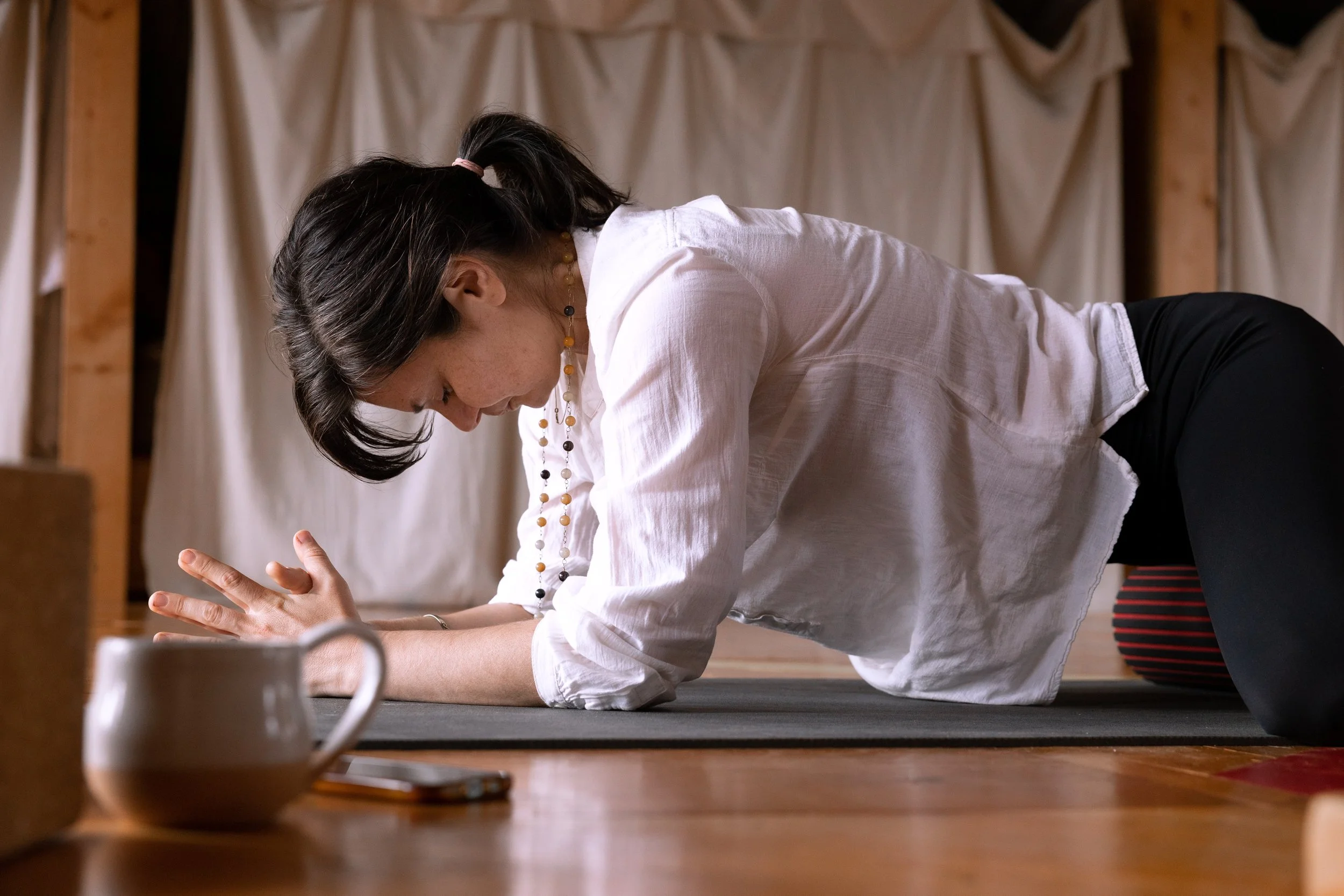The Body as the First Temple: Why Physical Practice Matters in Spiritual Work
At Circle Yoga Shala, we often say that any and all spiritual work must include the body.
What do we mean by that?
Your body is the first place where awareness develops. Your body is the container, or the temple, where all of your experience is housed. And it needs to be prepared, healed, and trained, just like your mind does.
And yet, the body can so easily be overlooked when we speak of spiritual practice. We’re not likely to image spiritual work involving sweating, stretching, lifting, or balancing. We’re more inclined to think of meditation cushions, singing bowls, and a copy of the Yoga Sutra on your desk.
Let’s dive deeper, as we unpack some specific ways that the physical body supports your spiritual inquiry.
1. Pain as an Obstacle to Inner Work
When the body is in pain—whether through chronic discomfort, fatigue, or injury—the mind has difficulty focusing on anything else. Energy that could be devoted to inner work is spent, at best, managing the ache and, at worst, agonizing about your situation.
This is not to say pain cannot be a teacher; it can be. But without a foundation of physical stability and strength, our capacity to concentrate is depleted.
2. “Stretch” the Mind by Stretching the Body
For the mind to “stretch” into new patterns, the body often must lead the way. The mind can’t understand what it doesn’t understand. Said another way, it is difficult to have any new thoughts and emotions if the body continues to remain the same ‘shape’.
We use posture practice (asana) to explore strange physical shapes, which feed the system new information, new sensations, and new stimulus, so that the mind can grow its perception of Reality. The result is that the physical becomes the doorway into the subtle.
3. The Fire of Transformation Requires a Strong Vessel
Real transformation—whether physical, emotional, or spiritual—is fire. And fire, left unattended, burns everything. The body must become strong enough to contain the heat of change without collapsing. This is why our work is not about flexibility alone. We build strength and endurance, so that when transformation comes, we can meet it without losing ourselves.
4. Anchor to the Real World
It is easy to get lost in the abstractions of the mind: to live in theories, ideals, or imagined realities. Physical practice reminds us that we live here, now—in gravity, in breath, in muscle and bone. This anchoring prevents spiritual seekers from drifting into idealism that cannot hold up in the demands of daily life.
5. Sense the Body to Dis-Identify from It
Paradoxically, to realize that you are not only the body, you must first fully sense it. To feel your heartbeat, your breath, the ground beneath your feet—these experiences root you in awareness. Eventually, this practice becomes the springboard that leads to the realization that the “I” who senses is not limited to the body, but is far vaster.
When Physical Practice Does Not Support You
Lastly, we must also talk about the fact that physical practice is not inherently supportive of spiritual goals. Just like anything else, physical practice can become a trap of the ego.
Here are some signs that your physical practice is not conducive to spiritual aspirations. It leaves you:
Irritated or short-tempered
Obsessed with achievement or perfection
Depleted and inwardly empty
Self-centered and disconnected from others
Distracted from the care of your relationships
When practice isolates you from love, compassion, and genuine connection, it has drifted from its true purpose. A healthy practice nourishes your inner life and your relationships equally—it deepens your presence in the world rather than pulling you away from it.
At Circle Yoga Shala, we view physical practice as a bridge: from body to mind, from self to Self, from the finite to the infinite. The bridge must be walked carefully—strong, steady, and with the awareness that each step is both the journey and the arrival.


